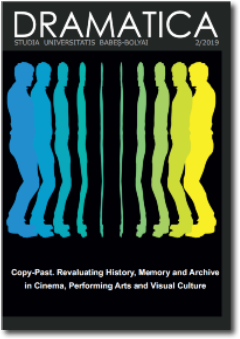RECREATING REALITIES IN HORROR FILMS: THE FOUND FOOTAGE EFFECT
RECREATING REALITIES IN HORROR FILMS: THE FOUND FOOTAGE EFFECT
Author(s): Claudia NegreaSubject(s): Fine Arts / Performing Arts, Photography, Film / Cinema / Cinematography
Published by: Studia Universitatis Babes-Bolyai
Keywords: found footage; horror films; audiences; authenticity; aesthetics; subgenre; social media;
Summary/Abstract: Regardless of the circumstances in which they are used, found footage insertions aim to establish for any kind of cinematographic production certain veracity and credibility in regard to the proposed themes and subjects. Given the authenticity of their aesthetics, these insertions seem to present reality as it is, leaving in most cases the feeling that there is no room for artistic interpretation. This paper aims to analyze and debate the usage of found footage in fiction film. Having its roots in pseudo-documentaries, the technique is widely known for its exploitation in horror film as it became an extremely convenient low-budget strategy to build up suspense and create the captivating universes imposed by the horror genre. Analyzing films that set the stage for the subgenre such as Cannibal Holocaust (1980) or more accessible productions like Blair Witch Project (1999) and Paranormal Activity (2007), the paper presents the techniques in which found footage manipulates audiences through certain aesthetic and narrative structures. Studying the means of production and effects on audiences, the analysis intends not only to debate the psychological impact of found footage images, but also to theorize the origin of this subgenre by approaching it from a wider perspective. Recalling David Bordwell’s observations on found footage horror films in his article, Return to Paranormalcy, it is important to insist on the niche that the subgenre unavoidably approaches through its techniques and selection of subjects. Therefore, the paper also aims to integrate the found footage film in a larger context by analyzing the character-spectator dynamic.
Journal: Studia Universitatis Babes-Bolyai - Dramatica
- Issue Year: 64/2019
- Issue No: 2
- Page Range: 145-152
- Page Count: 8
- Language: English

